I’m still in Summer. I’m still making jam and jelly. I’ve frozen a lot of grapes, purple and green. I’ve baked grape pies. There’s been a request from my kids for homemade grape ice cream.
What did you learn over Summer? Did you take a few courses? Did you take up horse riding? Did you learn a new trade, start a new job, relocate in time for Fall semester to begin? Did you take that long anticipated vacation that you fervently planned?
Something I learned over Summer was the life of a good grape. Why Concord grapes… It’s a sweet memory. Food usually is about a memory, not only to satisfy hunger and to fill stomachs.
My Grandma Helen probably made enough peanut butter & jelly sandwiches, for all her grandkids plus more, that would pay off a house mortgage if it was a feasible calculation. She loved Welch’s grape jelly made from Concord grapes. I don’t think there was ever a time being at my grandparents’ house when there was not one of those sandwiches made on request.
Welch’s is originally from Westfield, New York, deeply rooted since 1869. Its loving founder was Thomas Bramwell Welch. He relocated his company to Vineland, New Jersey, an area and town where the main focus was agriculture and progressive thinking. It was a grape-growing land. It was the “milk and honey” of vibrant grape crops, therefore having been named, Vineland. Advertisements were broadcast to attract Italian grape growers.
Residents produced unfermented wine–grape juice that was marketed as Dr. Welch’s Unfermented Wine. It later became Welch’s Grape Juice. That was 24 years after its conception, from the very beginning of the vision of Thomas Bramwell Welch. It was his dream that he made come alive.
Grape juice was served instead of wine at formal diplomatic functions in 1913. It was declared by Secretary of State William Jennings Bryan.
In 1914, wine and any alcoholic drink was forbade for grape juice, for Welch’s Grape Juice, aboard the United States naval ships. During World War I, Welch’s was the United States supplier of grape jam for the Navy, referred to as grapelade.
Today, Welch’s–Welch Foods Inc.— is headquartered in Concord, Massachusetts.
I never thought about raising grapes, let alone, Concord grapes–until reeling into years from my grandma’s peanut butter and Welch’s grape jelly sandwiches to when I was well into adult years–when my mother started raising Concords. She got me hooked. I then had two reasons for wanting to try my hand at having my own Concord grapes–my grandma’s love for Welch’s jelly and my mom’s love for Concords. It was systematic for me, a natural thing for me to do and have. It felt familiar to me, the fondness because of a memory. It’s been one of the deepest blessings I have bestowed.
It is end-of-season, the grapes are finishing up for the year. I’ve had to cut mine, but God has given such a full bounty. He’s like these grapes. They produce, are hearty, and they give more back, from year to year. The strength of their branches and vines nourish a healthy fruit, the plants flourishing through nature’s wrath of rapid climate change and harsh weather. They withstand winter ice and scorching summer heat. They continue thriving, even after their fruit is no longer attached to the strong arms of the plants that gave them support, growth, and nourishment to live and produce abundantly. They supply for the purpose for which they were created. This is the beauty of life. It is in the heart of every person, in every living being that God has made.
For unripe Concords, there is no need to add pectin when making jelly. There is a natural pectin in the pulp of the unripe grapes, and from the seeds that is cooked out of and then extracted through a strainer for a seedless spread that is jelly. Peelings and softened seeds of a fruit included in a spread, in the production of it, is jam. It is a significant difference when describing a sweet fruit spread for bread.
If you can still find unripe Concord grapes in your area, I recommend cooking and baking with these green jewels. In the end of jelly-making, cooking and baking, the juice from these grapes is the same color (or very close) and taste of the fully ripe Concords–purple and Welch-like. Nothing is wasted, nor does it become a waste. For jelly, seeds and peelings can be put back into nature to feed nature–the birds that depend on human hands at times.
To make Green Concord Jelly, sort through and clean 6 cups green Concord grapes. Heat over medium-heat, in just a little water (1/2 cup to 1 cup), in a heavy pan or Dutch oven for 15 minutes on the stove. Loosely cover with a lid.
Mash cooked grapes through a sieve to gather pulp for jelly.
Mash it dry, the fruit matter no longer able to extract liquid. When you are through, make sure that you scrape down and around the circumference of the outside of the sieve to collect all the accumulative liquid.
Freshly squeeze and add 1 lemon.
More pulp can be extracted. The contents are still wet from what was stirred and turned over in the sieve.
Place all the pulp in the heavy pan. Place uncovered on the stove and cook for a lengthy time over medium-low to medium heat, stirring ever so often. When jelly has cooked down, ladle into hot, sterilized jars for a canning bath or oven-canning.
production of nature, production of life.
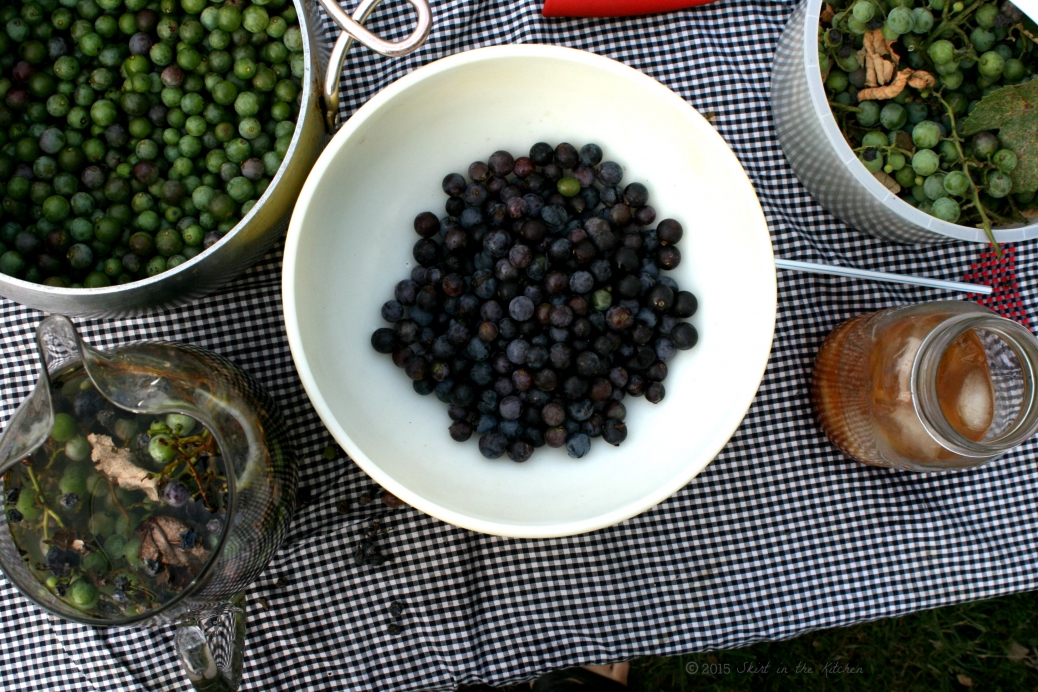
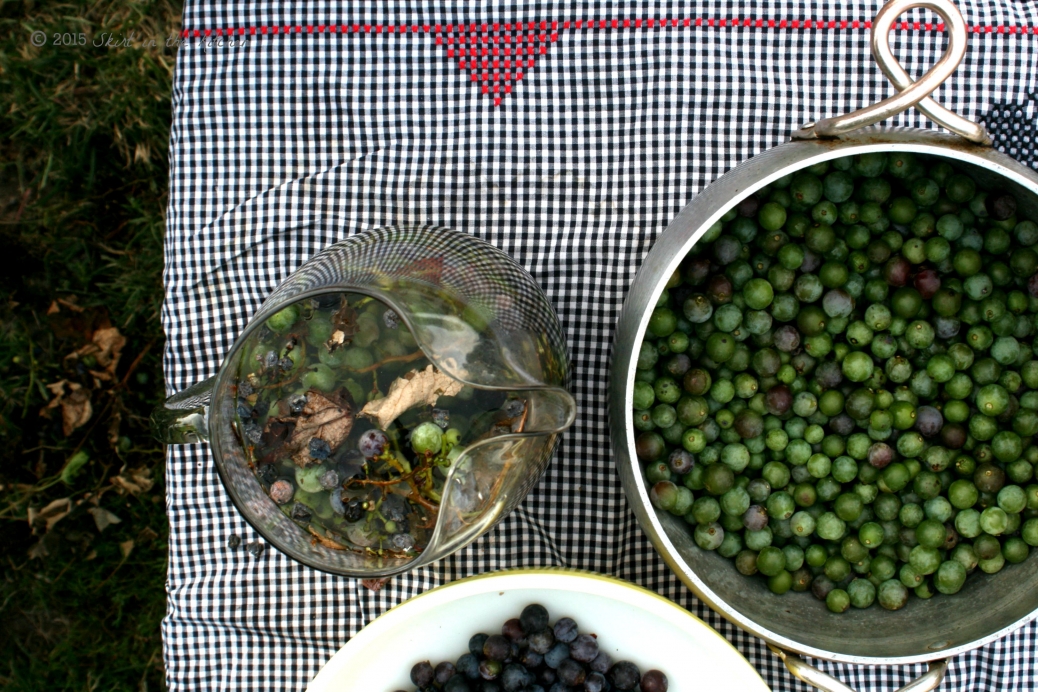
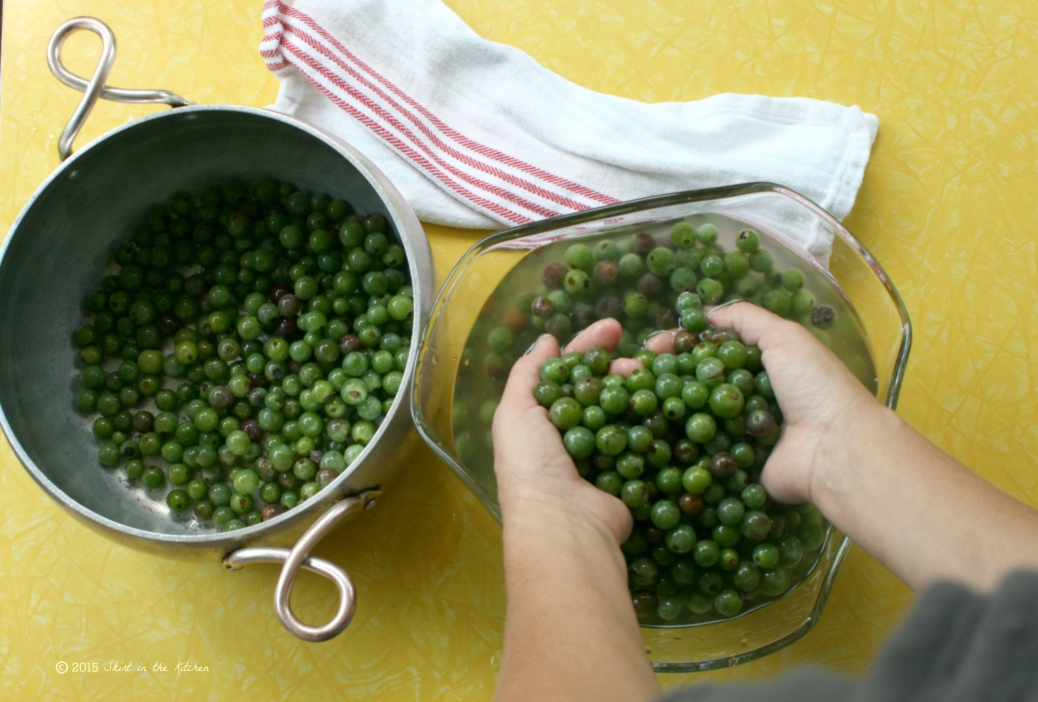
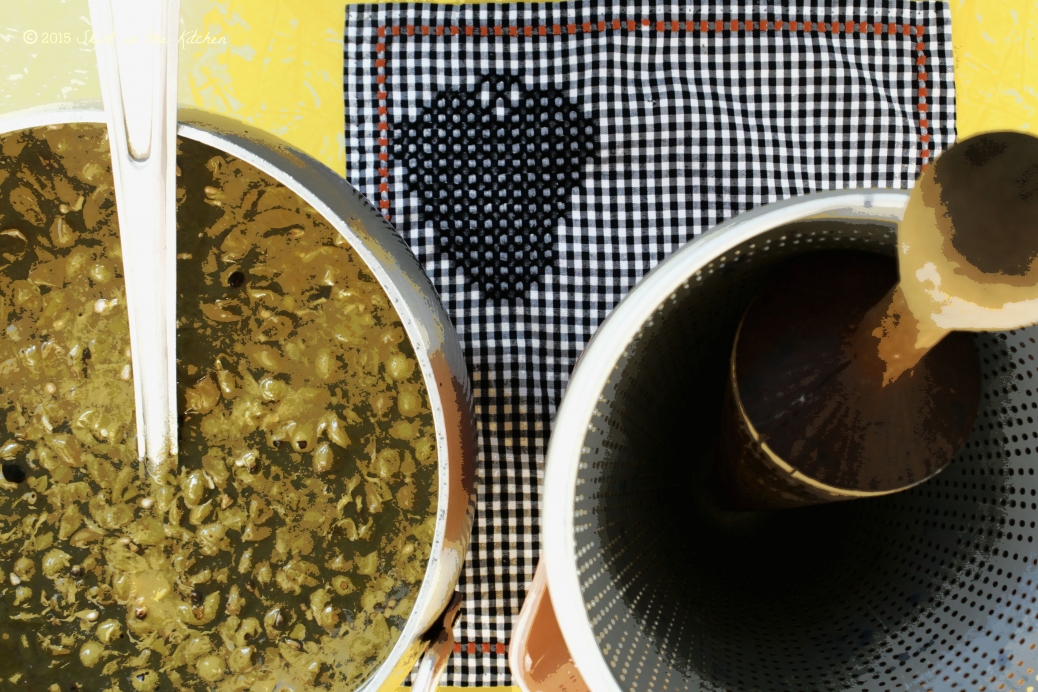
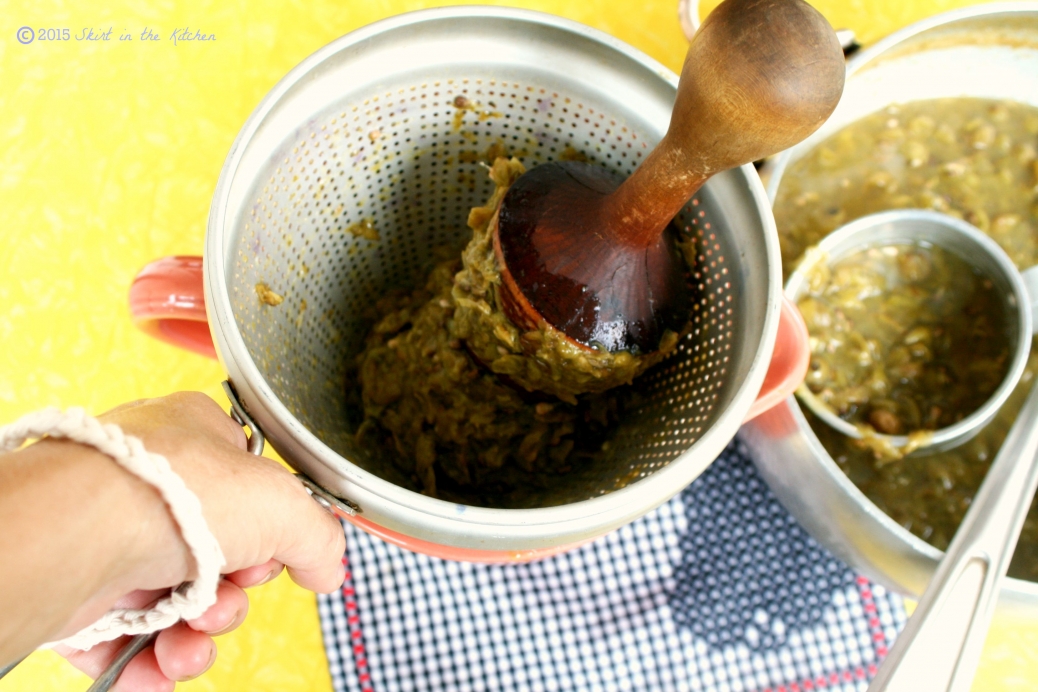
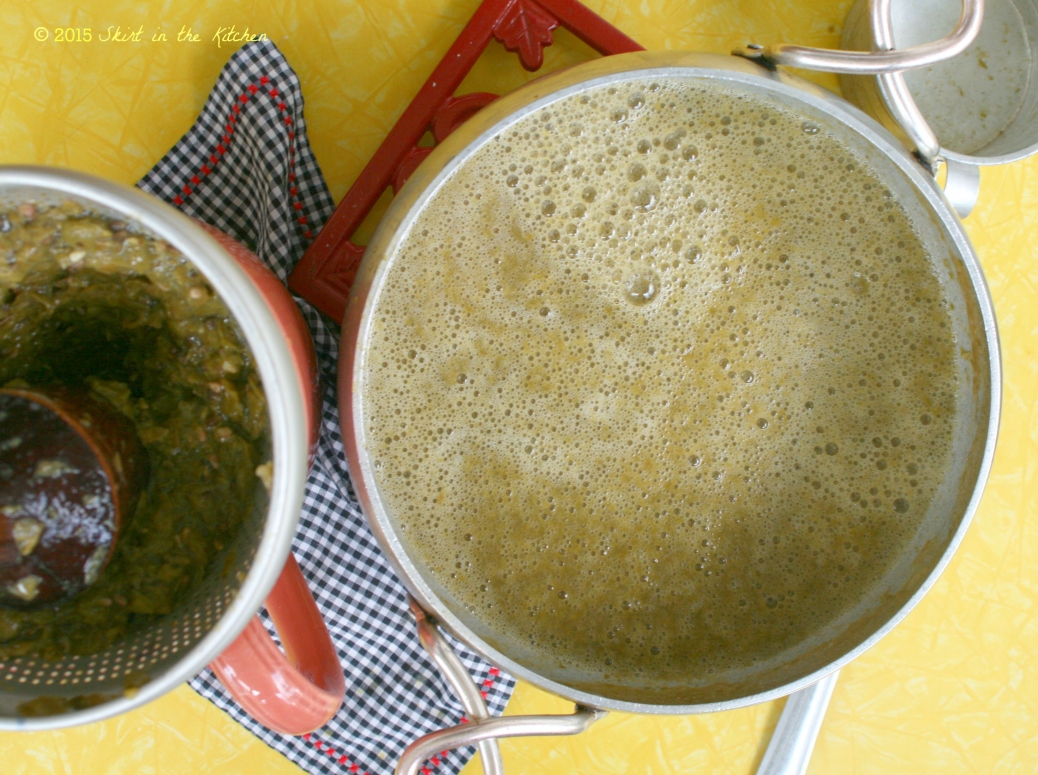
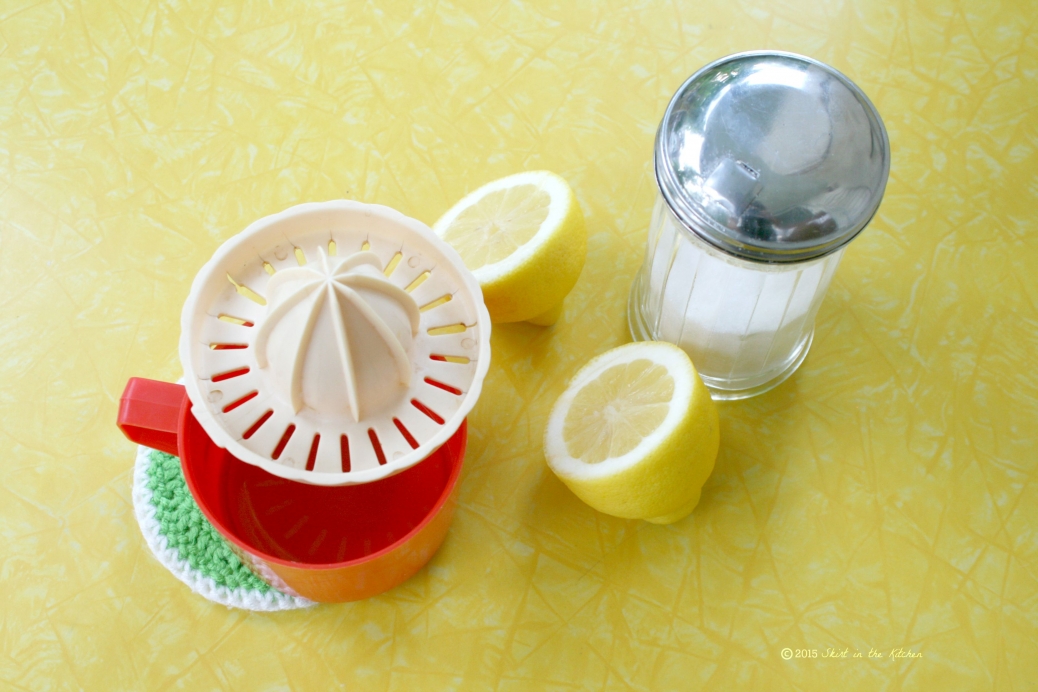
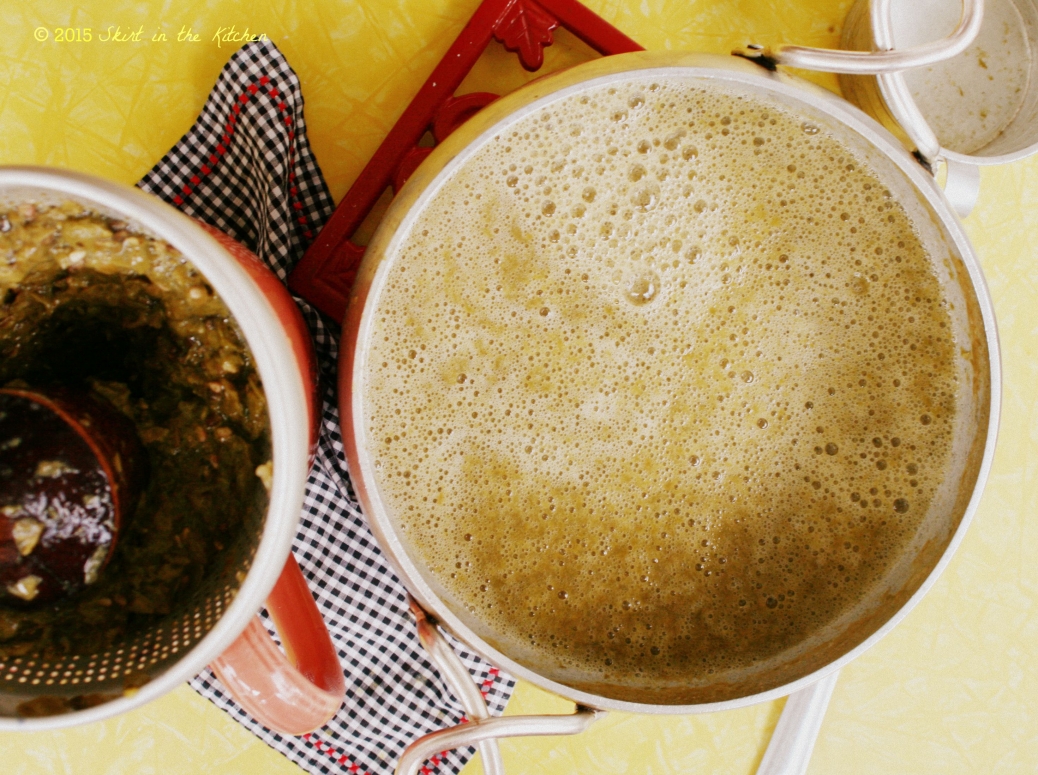
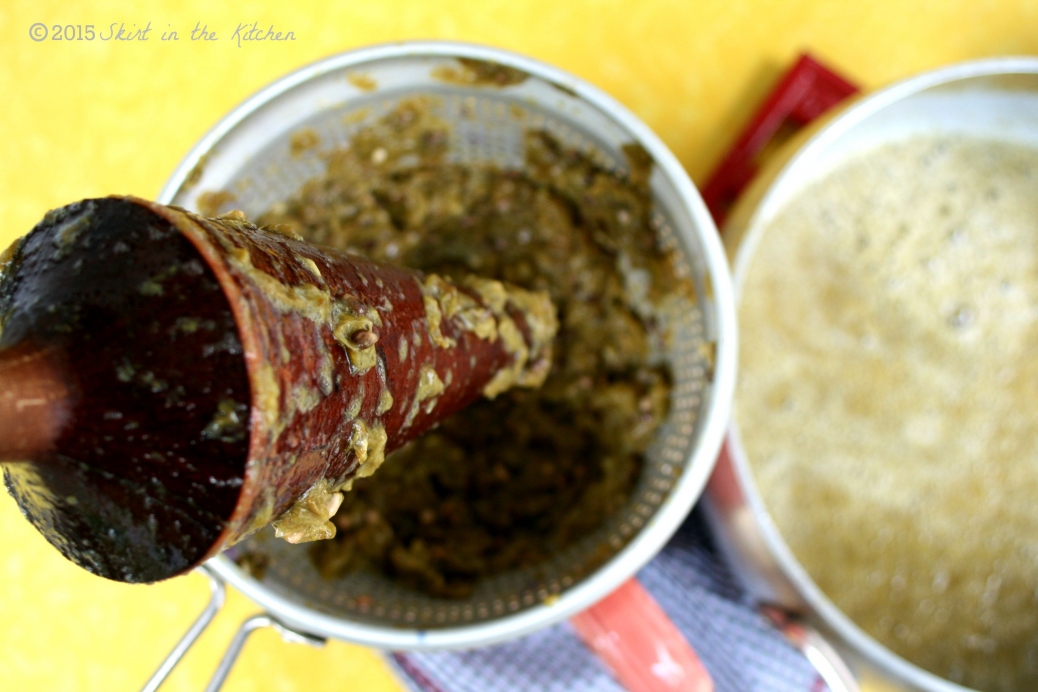
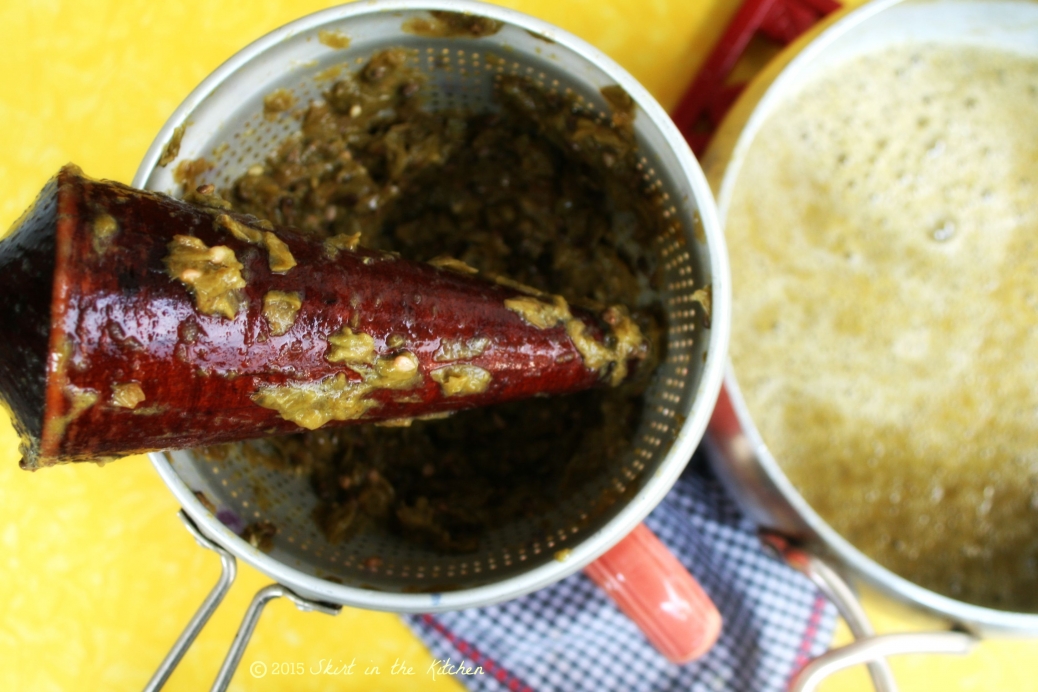
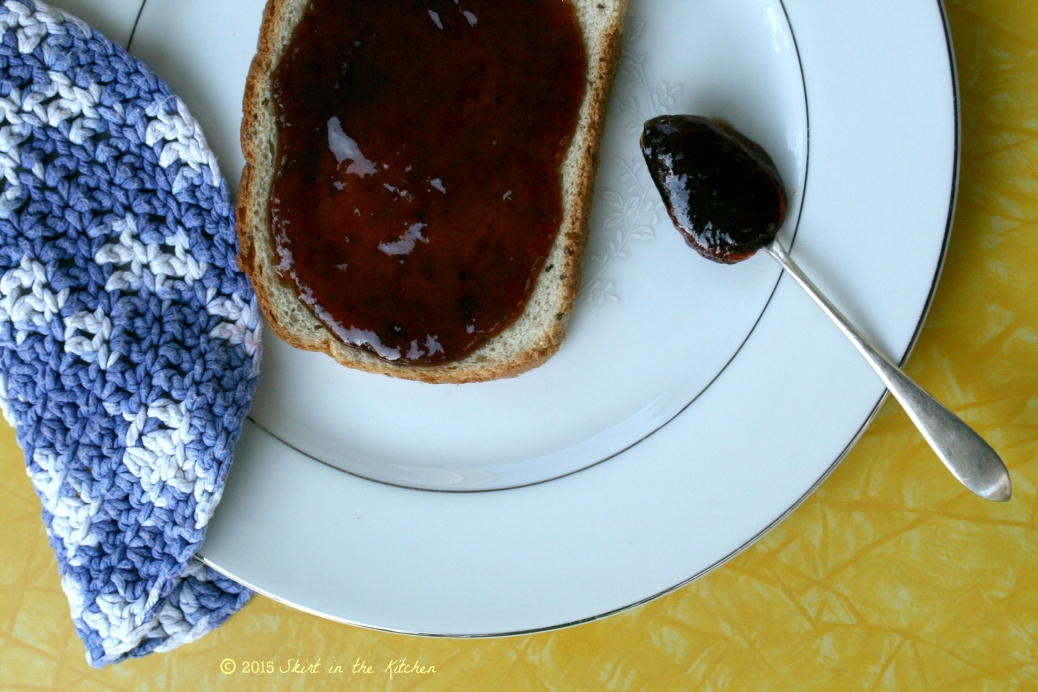
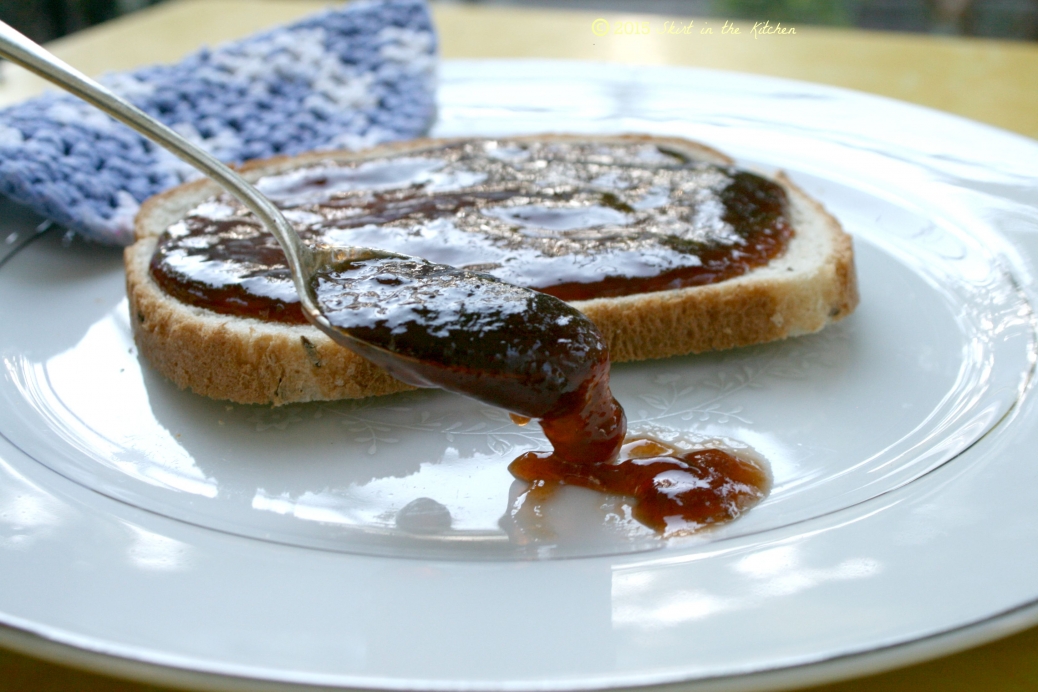

Leave a Reply